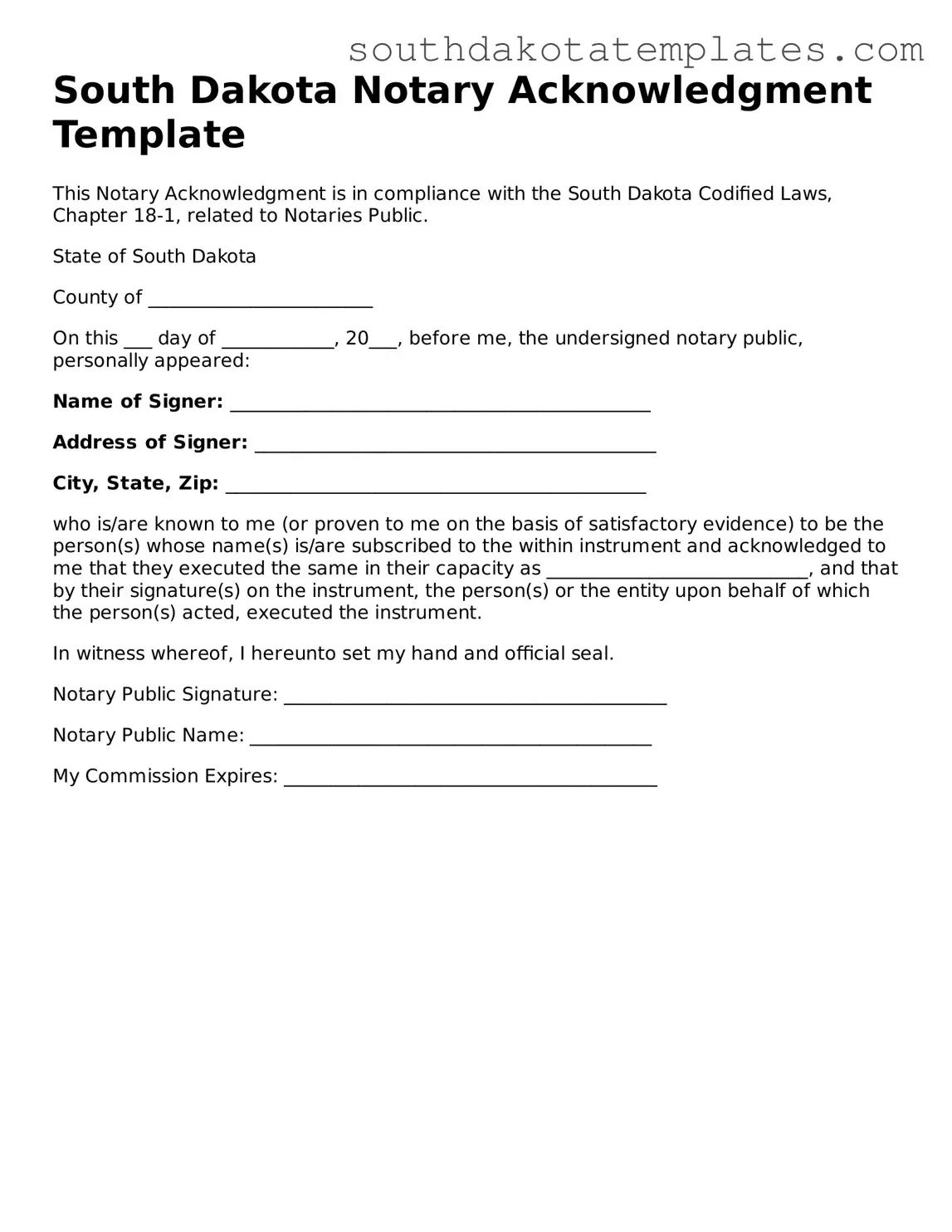Free South Dakota Notary Acknowledgement Document
The South Dakota Notary Acknowledgement form is a legal document used to verify the identity of individuals signing a document and to confirm that they are doing so voluntarily. This form plays a crucial role in ensuring the authenticity of signatures, which can help prevent fraud and protect the rights of all parties involved. If you need to complete this form, click the button below to get started.
Get Notary Acknowledgement
